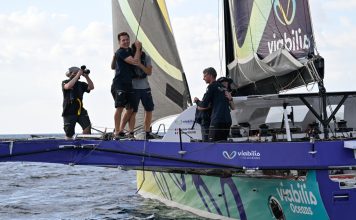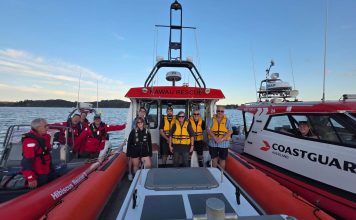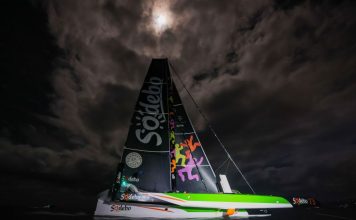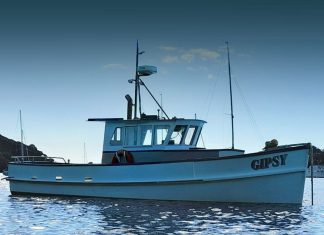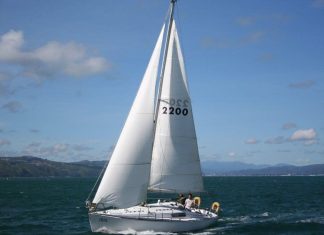The art of flight
There’s something magical about watching a 75-kilogram catamaran rise clear of the water. One moment it’s skimming across the chop; the next, it’s flying silently at 35 knots. At the PredictWind A-Class Catamaran World Championships 2025, hosted by Auckland’s Milford Cruising Club, that miracle of flight is all about design, precision, and control.
Each A-Class catamaran follows the same box-rule limits: no more than 5.49 metres long, 2.3 metres wide, and powered by a single sail of 13.94 square metres. Within those constraints lies near-infinite possibility.
A dual-class evolution
Since 2018, the A-Class has been split into two categories: Open and Classic.
The Open fleet features full foiling platforms. These use curved daggerboards and T-foiled rudders to lift both hulls clear of the water. Riders constantly adjust foil rake and sail trim to balance flight height, using fingertip control and instinct to keep the boat stable.
By contrast, the Classic fleet retains straight or constant-curve foils, limited to flying one hull at a time. Without full lift, the Classics rely on clean hydrodynamics, light weight, and precise sail handling. In lighter winds they’re often quicker, their lower drag keeping them ahead of early foilers.
Both fleets use identical hull dimensions and rig profiles, and both require total focus. One rewards control at the edge of stability, the other tactical mastery across a tight pack.
The hardware behind the headlines
Innovation defines the A-Class. At this year’s Worlds, several boats will debut the Scheurer G8 design, a new Swiss-built Classic that’s generating plenty of interest. It features a wider stern for extra downwind power, a recessed traveller track, and a raised rear beam to keep sheets clear of spray. Beneath the surface, redesigned C-boards and thinner-chord T-rudders promise higher efficiency and lower drag.
In the Open division, Exploder and DNA F1x platforms dominate. Both push composite technology to its limits with pre-preg carbon fibre laminates and precision moulding. Their ultra-light foils and aerodynamic beams give them fighter-jet efficiency. Skippers tune rake angles within millimetres to find the sweet spot where lift, drag, and control balance perfectly.
Hydrodynamic gains are matched by the quiet revolution in aerodynamics. Sail designers now integrate curved booms and reduced luff wrinkles to smooth airflow. The result is pure acceleration — less turbulence, more lift, and immediate response when the breeze shifts.
Technology meets tactics
The PredictWind partnership adds another layer of sophistication. With live forecasting and tide data fed directly to teams, sailors can read micro-changes in wind strength and angle before they reach the course. In a class where one knot of pressure can mean flying or falling, that insight is gold.
Still, even the most advanced tools can’t replace intuition. On these boats, small adjustments decide everything — half a degree of foil rake or a centimetre of mainsheet travel can change race outcomes. It’s where science meets feel, and where sailors blend engineering knowledge with human instinct.
Precision and poise
Auckland’s sailing community has long been a proving ground for performance design. Local builder and America’s Cup designer Mike Drummond brings that pedigree to the Classic fleet, racing his own Exploder Ad3 and contributing design insight that filters through the fleet. The Milford Cruising Club’s setting in the Hauraki Gulf, with its shifting breezes and rolling chop, makes it a perfect testbed for both technology and talent.
The A-Class is about balance — between power and control, design and intuition. The 2025 Worlds will showcase that harmony at its finest. Whether they’re skimming just above the Gulf’s surface or slicing through it with twin hulls, these boats are at the frontier of what’s possible with wind alone.
As the fleets line up this weekend, each sailor knows their tools are as refined as their skills. The real race lies in who can make science sing, and keep flying when others fall.
















